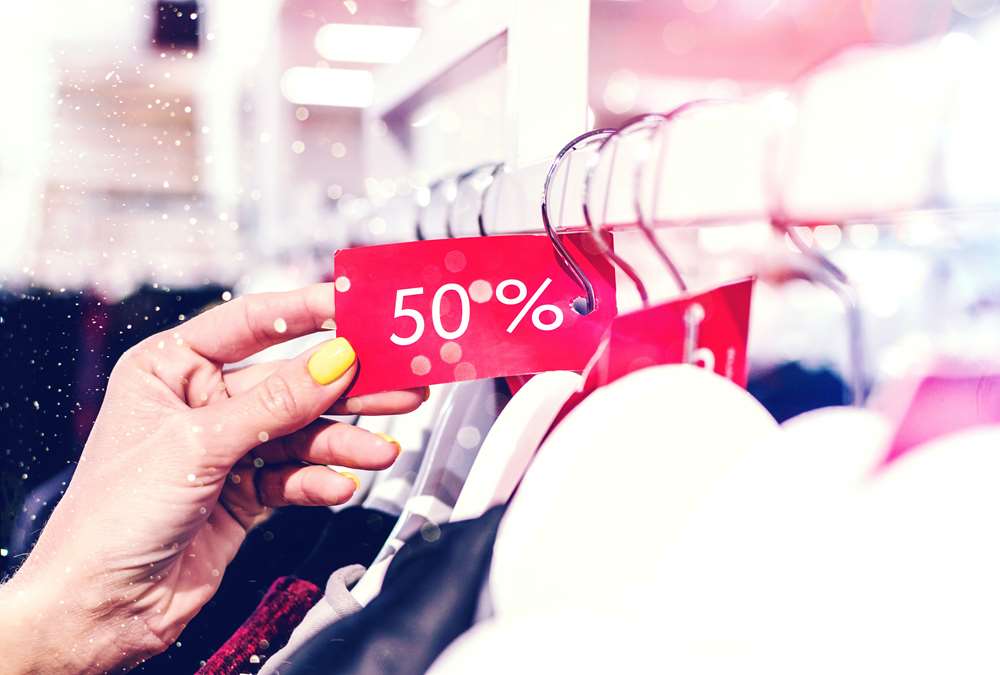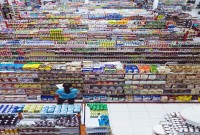- Home
- Business Processes
- Industry Knowledge
- Aerospace Industry
- Automotive Industry
- Banking Domain
- BFSI Industry
- Consumer/ FMCG Industry
- Chemicals Industry
- Engineering & Construction
- Energy Industry
- Education Domain
- Finance Domain
- Hospitality Domain
- Healthcare Industry
- Insurance Domain
- Retail Industry
- Travel and Tourism Domain
- Telecom Industry
- Leadership Skills
- eLearning
- Home
- Industry Knowledge
- Retail Industry
- Trends in Retail Sector
Trends in Retail Sector
Markets are continuously changing and to understand the dynamics of any industry it is important to understand what is happening and how the industry market players see the future for the industry. In this article, we will discuss the recent trends witnessed by the retail sector. This document provides insights into major trends identified for the retail sector.
Given below are the key trends in the retail industry:
Competition:
Competition among retailers has never been tougher and retailers need to build a competitive advantage to survive. On one side, Superstores are battling each other, while Internet marketers are stealing customers from stores. Some consumers are using stores as showrooms where they can touch and feel the merchandise, and then making their purchases at lower cost online sites. Online selling at deep discounts is even making inroads into major consumer purchases such as jewelry.
Private Brands:
As retail chains expand and spread their operations they are focusing on the development of private brands. A private brand is the licensed brand of a retailer. These are exclusive and only available at outlets of a specific retailer. Marks & Spencer stores for example carry the St Michael brand. In India, West Side has emphasized private brands while Shoppers Stop focuses more on manufacturers' brands or brands available across retail chains. The use of private brand enables retailers to maintain an image of exclusiveness and develop a loyal clientele. It also enables them to quote lower prices since retailers do not have to promote or spend heavily on advertisements of private brands whose circulation is limited.
Exclusive Products:
Manufacturers are adapting their marketing strategies to the needs of modem retail. They often develop products exclusively for a specific retail chain. Many consumer durable companies in India for example sell customized washing machines and refrigerator sets through hypermarkets like Big Bazaar, etc.
Expansion into Emerging Markets:
Retailers in developed markets are dealing with home markets that are growing at a slower rate and in order to achieve growth, these companies are expanding their base in new, emerging markets. Although large global retailers are making inroads into these markets, the companies that are best positioned to benefit are those that are already based in these markets. Many of these local retailers have been successful in expanding into neighboring emerging markets, becoming regional powerhouses. The most exciting stories in retail industry growth are in emerging nations, such as China, India, and Brazil. In China, many of the world’s leading retail chains are rushing to open stores and new malls have been developed at a rapid pace, even in remote cities.
Multichannel Availability:
The means by which consumers purchase products, services, or offerings have undergone vast changes during this decade. The consumer has adapted to multiple channels and they move easily across channels to search for products, decide on the best product through discussions or reviews, search for the best prices and promotions on the net, finalize a store/web-store and finally make a purchase. Retailers need to understand this need for changing behavior and enable themselves to service the customers through various channels while presenting an integrated view of the business.
E-Commerce:
E-commerce refers to buying and selling products over the Internet is being widely used for purchasing goods from the convenience of home. Retailers need to be consistent across all channels. Consumers expect to receive the same benefits and services from a retailer, whether they make their purchase online or in-store.
Mobile Commerce:
Mobile Commerce refers to using a mobile phone or smartphone to conduct retail transactions is gaining acceptance for shopping. The popularity of social networking sites, such as Facebook and Twitter, is also having an impact on the retail industry. A recent trend is that consumers increasingly reach for their phones and tablets even while shopping in a physical store. It is anticipated that consumers will make more purchases via their mobile phone than their credit card in the coming years.
Predictive Analysis:
New technologies are being incorporated to better predict customer demand patterns, improve marketing, and optimize product pricing and supply chain efficiencies. Retailers can use data they collect to customize their product selection to align with customer demands.
Technology:
A proper framework is needed to understand all the facets of operations and technology which need to be deployed to deliver on the expectations. With the advent of the internet, retailers can create online stores that are open 24 hours a day, 7 days a week. Customers can shop from the comfort of their own homes, searching for products, and comparing prices of retailers around the world. The Internet has increased both opportunities and competition within the retail industry.
Mergers and Acquisitions:
Mergers and acquisitions result in economies of a larger scale that result in increased profits; better-negotiating strength enabling cost reductions. Small retailers are merging with large players, decreasing the number of competitors in the industry. Large retailers can purchase smaller companies with new innovative products and market the products under their own brand names.
Home Delivery:
Home delivery from brick and mortar retail locations is gaining acceptance and more and more customers are expecting the retailers to provide this service.
Innovations in In-Store Technology:
The rise of multi-channel retailing and ease of online shopping have led retailers to update their stores with technological conveniences like tablets, interactive panels, and digital signage. Some retailers are expediting the checkout experience by allowing shoppers to use their mobile phones to instantly scan their items and pay at self-serve kiosks. Other retailers are adding kiosks that let consumers purchase products not available in-store and installing e-signs that allow for changing prices remotely.
Related Links
You May Also Like
-
Challenges in Consumer Goods Industry
There are tens of thousands of general consumer products manufacturers in the United States. They compete to develop the best products at the most affordable price for the greatest number of consumers. Challenges for these organizations include meeting the changing demands of customers, maneuvering through a consolidating market, and executing strategies to grow profitably.
-
FMCG or consumer packaged goods (CPG) are products that are sold quickly and at relatively low cost, examples include non-durable goods such as soft drinks, toiletries, and grocery items. They generally sell in large quantities, so the cumulative profit on such products can be substantial and these industries often operate on thin margins.
-
Retail Industry – Drivers & Dynamics
To succeed in the retail sector, retailers must offer compelling value propositions and be responsive to market dynamics. The continued rise of e-commerce has altered the dynamics of the retail industry in such a way that has forced retailers to drastically reallocate their resources to multi-channel strategies. This article focuses on retail industry drivers and dynamics that provide the reader with a basic understanding of the factors that influence this trade. Understand the business drivers and dynamics of retail industry
-
Competitive Landscape of Retail Industry
In an increasingly competitive landscape, retail industry players must compete in a number of ways. In this article, we will learn about the competitive landscape of the retail industry. Learn the key players in the retail industry and their business profile. Learn more about the top 5 industry players. Competition is rough, especially for the small business. Knowing how business stacks up to the competition is important to your business strategy.
-
Markets are continuously changing and to understand the dynamics of any industry it is important to understand what is happening and how the industry market players see the future for the industry. In this article, we will discuss the recent trends witnessed by the retail sector. This document provides insights into major trends identified for the retail sector.
-
Retail Industry: Strategies for overcoming challenges
To stay competitive in this ever-evolving landscape, it is imperative for retailers to deliver a seamless customer experience and provide the right services and products at the right time. Learn the strategies for overcoming challenges for the retail industry. Retailers must use technology and solutions to revive their businesses in the COVID-19 world. An omnichannel marketing strategy can help retailers reach a wider audience for their brands.
-
From an economic standpoint, there are three main types of consumer goods: durable goods, nondurable goods, and services. For marketing purposes, consumer goods can be grouped into different categories based on consumer behavior, how consumers shop for them, and how frequently consumers shop for them. One of the largest consumer goods groups is called fast-moving consumer goods. This segment includes nondurable goods like food and drinks that move rapidly through the chain from producers to distributors and retailers than on to consumers.
-
Retail Industry: Revenue Model
Understand the traditional retail revenue model and, what are the variations in different revenue models adopted by key players in the retail industry. Analyze the pros and cons of various models. The most common and most profitable revenue model is that of the traditional retailer. The traditional retailer profits by selling products and services directly to buyers at a mark-up from the actual cost.
-
Durable goods are consumer goods that have a long life span (e.g. 3+ years) and are used over time. Highly durable goods such as refrigerators, cars, or mobile phones usually continue to be useful for three or more years of use, and hence durable goods are typically characterized by long periods between successive purchases.
-
Consumers benefit from retailing as retailers perform marketing functions that make it possible for customers to have access to a broad variety of products and services. Retailing also helps to create a place, time, and possession utilities. A retailer's service also helps to enhance a product's image. Retailing has a tremendous impact on the economy. It involves high annual sales and employment. Learn the importance of the retail industry in this article.
Explore Our Free Training Articles or
Sign Up to Start With Our eLearning Courses

About Us
Learning
© 2023 TechnoFunc, All Rights Reserved










